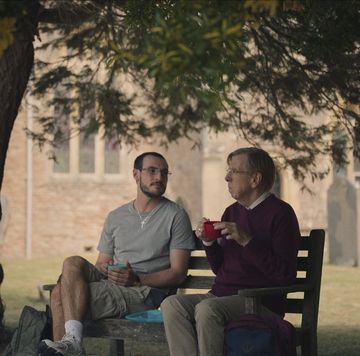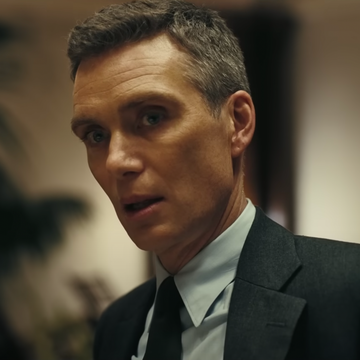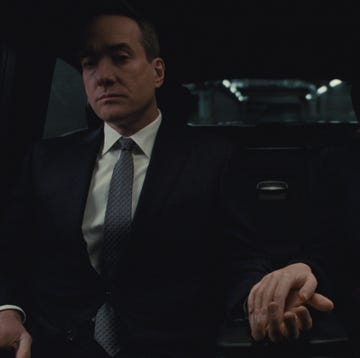When she was in middle school, a new student moved to Kathleen Zellner's Oklahoma hometown. The girl was the target of relentless bullying—and Zellner took it upon herself to confront the injustice head on.
After gym one day, Zellner, a skinny sixth grader, cornered one particularly relentless mean girl in the locker room.
Leave the new kid alone, she growled. Or you'll have to deal with me.
Then, Zellner slammed a locker shut in the bully's stunned face, and walked away.
That wiry Oklahoman kid grew up to be one of the most intimidating and well-regarded defence attorneys in the country, specialising in wrongful convictions. Since opening her own practice in 1990, her work has led to the exoneration of 19 men and won millions from wrongful conviction and medical malpractice lawsuits.
The need she felt back then to protect the underdog "still" drives her, Zellner tells Esquire.com. "And... I don't give up."
Today, Zellner is the attorney for convicted murderer Steven Avery. His high-profile case is at the centre of Netflix's hit series Making a Murderer, but the star of the second season of the show is undoubtedly Zellner, who painstakingly recreates every detail from the state’s case against Avery. She buys the exact car the victim had, re-tests evidence, and calls out missteps from prosecutors and her client's former defence attorneys.
Avery, who has spent the majority of his life in prison, is convinced the meticulous, tough-as-nails Zellner will be the one to finally set him free.
“I never heard of a lawyer who’s got so many people out,” says Avery in the doc. “She’s the best lawyer I’ve ever seen.”
Zellner didn't plan on becoming the hero for those seeking exoneration—in fact, she didn't even want to be a lawyer. Born in Midland, Texas, to a geologist father and a nurse mother, Zellner dreamed of becoming an investigative journalist, or working for the FBI.
When she was young, her parents uprooted her and her seven siblings (most of whom would go on to become either psychologists or lawyers) to Bartlesville, Oklahoma.
In their new home, Zellner decorated her walls with "Wanted" posters sent by her uncle, a postal inspector, and ordered martial arts instructional guides to teach herself how to grapple and ground-fight, according to Newsweek. Her judo and jujitsu moves often came in handy. When she was 8, she beat up a teenage boy who killed a beloved neighborhood pet.
Zellner moved away from home to attend Marquette University in Wisconsin. She wanted to become a history teacher. After one semester, she transferred to University of Missouri, where she met Robert Zellner. The couple married and moved briefly to Canada in the mid-1970s, before returning to the U.S. The couple went on to have one daughter, Anne Zellner, who now practices law in Denver at the Ryley Carlock & Applewhite, according to the firm's site.
Robert thought his strong-willed wife would make a good lawyer, and urged her to pursue a a career in the legal field. In 1981, Zellner graduated from Northern Illinois Law School. She clerked for a 2nd District Appellate Court justice and worked for several large law firms.
The first case she worked on after opening her own law firm in 1990 began with a request from an anti-death-penalty organisation. Zellner was asked to represent Larry Eyler, an Indianapolis house painter convicted and sentenced to death for the 1984 murder and dismemberment of a 15-year-old.
Zellner and her associates had nearly gotten the conviction reversed due to attorney misconduct, when Eyler died from AIDS-related complications in 1994, according to The Guardian.
By then, Zellner's client had entrusted her with a horrific secret: He'd murdered at least 17 others. Eyeler wanted to strike a deal with prosecutors to reveal the names of the victims in exchange for a commuted sentence. Prosecutors refused, and Zellner was bound by attorney-client privilege to keep the information a secret until he died.
In the spring of 1994—a year after her client's death—Zellner held a press conference to announce Eyler’s confessions. She revealed the gruesome murder details and names of his victims, stating: "The reason I'm here is so that the families know, he did confess to the murder of your sons. He told me that, and I hope that can bring you some peace of mind."
Keeping that secret for so long was “really hard on me,” Zellner told the Chicago Tribune at the time. “I had these victims’ families pleading with me during his life to tell them what happened.”
After Eyler, she vowed only to defend only the innocent. In order to do that, the attorney works tirelessly when taking a case to figure out what really happened.
Four years later, her firm (which also handles major civil rights violations, medical malpractice, and prisoner abuse cases) took on their first case wrongful conviction case. Joseph Burrows spent five years awaiting execution in Illinois for murdering an 88-year-old man and Zellner got him off of Death Row by gaining the trust of the state’s lead witness, a cocaine dealer named Gayle Potter, and persuading her to admit she was the real killer.
Since then, Zellner has represented a number of high-profile clients, including Ryan Ferguson, who spent nearly a decade in prison for the 2001 murder of newspaper editor Kent Heitholt. Ferguson was only 19 when he was sentenced to 40 years behind bars.
Zellner fought tirelessly for four years to get him out—and won.
"She took a look at my case and was like, 'I know you're innocent and I’m going to be with you every step of the way, I believe you," Ferguson, now 34, tells Esquire. "Not only did she help me get out of prison, she helped me start my new life. She's like family."
Zellner and Ferguson still text weekly and have lunch when they can. "You spend so much time with someone and you're bonded to [them] in a way that you're not even bonded to the people in your extended family," Zellner says.
Mario Casciaro, another client whose conviction for the murder of his teenage co-worker Brian Carrick was overturned in September 2015, is now finishing up law school. Zellner will attend the graduation ceremony.
"These cases stay with you forever. You're immersed in people's lives. It's not like a business transaction. You've seen them at their absolutely worst, behind bars, when they're close to being suicidal," she says. "It's like going through war with somebody, and you've saved their life.
Today, she faces her highest profile battle yet as she fights for Avery.
Avery served 18 years in prison for a 1985 rape in Manitowoc County, before he was exonerated by DNA testing. Two years later, he was convicted in a separate murder, that of Teresa Halbach, who was killed after visiting the Avery family’s auto salvage yard to photograph a car for Auto Trader magazine in 2005.
Zellner became intrigued after binge-watching Making a Murderer with her husband Robert in their home movie theater.
Several things about the case immediately stood out to Zellner: "The state story about blood—why would there be no fingerprints in the car and his blood in the car? The bullet also really bothered me, because it didn't show up in the first five or six searches, same with the key," she says. "I thought, wow, this really makes no sense."
But what really piqued her interest was Avery's facial expression after he was handed down a guilty verdict. "A lot of times, the guilty person will be histrionic [and] burst into tears, sobbing, [but he] wasn't like that," she says. "There's a certain way that someone, when they're innocent, looks when that happens and I saw that on his face. I know that sounds subjective—and I wouldn't take a case just on that—but in light of everything else, I thought there's something really wrong with this case."
She contacted Avery's friend, Sandy Greenman, who arranged a meeting between the two. "I told him, 'If you're guilty, don't hire me,' " Zellner recalls. "I wasn't kidding; I tell that to all of my clients."
Avery was thrilled to have her on board—and so was Netflix. "She had offers from other projects before we even spoke with her, but she declined those and chose to film with us," Making a Murderer Part 2 executive producer Laura Ricciardi said of Zellner in a press release. "She understood that, in agreeing to film with us, we would need a certain level of access to make the storytelling meaningful. We had no idea what shape that would take and really, with Kathleen and all of our subjects, it’s all about building trust."
The show largely focuses on the post-conviction phase—and relies heavily on Zellner to narrate the process. She's seen recreating every step of how the prosecution alleged Halbach’s murder occurred like questioning how much heat is necessary to burn a body, recruiting an expert to examine bones found on Avery’s property, and recreating blood splatter found inside a car door, among other things.
"She was incredibly gracious and really helped guide us," Ricciardi says. "Of course we were doing our own research and fact checking, but she was incredibly valuable in laying that foundation."
Since Making a Murderer Part 2 launched on 19 October, Zellner's inbox has been flooded with case tips, resumes, and fan mail (just last week, she received more than 500 emails). But, she says, she doesn't do this for the attention.
In the 1990s she was approached by Law & Order executive producer Dick Wolfe about a television series, but was "just... really busy with what I’m doing," she says. "I’ve also been approached to do books or teach, which I would [do] at some point, because I have young people working for me and... I think it’s really important."
For now, she focuses on Avery. Her request for a retrial was denied in 2017 by Judge Angela Sutkiewicz of Sheboygan County, Wisconsin, who claimed that the defendant had "failed to establish any grounds that would trigger the right to a new trial in the interests of justice."
In Making a Murder, Zellner says she "would like to be diplomatic about this opinion," but "it's hard to do that when I've got somebody's life at stake and on the receiving end of it is someone who obviously... is making fundamental mistakes about the underlying facts in the case."
But she's not giving up.
"We haven't failed yet on the [wrongful conviction] cases we've taken on," she says.
And she doesn't plan to start.
Rose is a Senior Editor at ELLE overseeing features and projects about women's issues. She is an accomplished and compassionate storyteller and editor who excels in obtaining exclusive interviews and unearthing compelling features.















